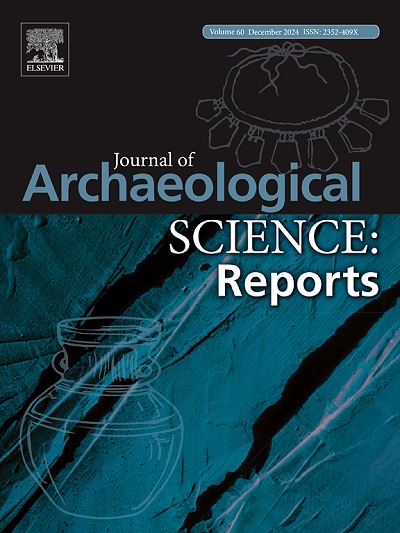Application of cartographic analysis to the characterization and measurement of archaeological coins
IF 1.5
2区 历史学
0 ARCHAEOLOGY
引用次数: 0
Abstract
Characterizing and measuring ancient coins is an important task for historians. Since the coin has a relief, it is possible to study the surface of the coin as if it were a terrain, creating a digital elevation model (DEM). A DEM is a digital representation of the bare topographic surface of the Earth and can be generated and managed using a Geographical Information System (GIS). In our proposal, the first step is to create a 3D model of the surface of the coin using photogrammetric techniques in a specific workflow. This workflow comprises the design of the data acquisition, orientation and scaling of the 3D model, followed by exportation as a point cloud. The acquired point cloud is then processed in a GIS to generate the DEM, using spatial interpolation techniques to derive a continuous raster-format surface. A range of typical cartographic analyses (visualisation, shading, measurements and profiling) is then performed on the DEM, which accurately represents the topographic surface of the coin. This approach enables the characterisation of the surface of the coin by highlighting distinctive features and providing both metric and visual information, greatly facilitating the examination of archaeological coins from different sets of tests.
地图学分析在考古钱币表征与测量中的应用
对古钱币进行表征和测量是历史学家的一项重要任务。由于硬币有浮雕,所以可以像研究地形一样研究硬币的表面,创建数字高程模型(DEM)。DEM是地球裸露地形表面的数字表示,可以使用地理信息系统(GIS)生成和管理。在我们的建议中,第一步是在特定的工作流程中使用摄影测量技术创建硬币表面的3D模型。该工作流包括数据采集的设计,3D模型的定向和缩放,然后导出为点云。然后在GIS中处理获取的点云以生成DEM,使用空间插值技术获得连续栅格格式的表面。然后在DEM上进行一系列典型的制图分析(可视化、阴影、测量和剖面),这准确地代表了硬币的地形表面。这种方法通过突出独特的特征,并提供度量和视觉信息,使硬币表面的特征得以体现,极大地促进了对不同测试集的考古硬币的检查。
本文章由计算机程序翻译,如有差异,请以英文原文为准。
求助全文
约1分钟内获得全文
求助全文
来源期刊

Journal of Archaeological Science-Reports
ARCHAEOLOGY-
CiteScore
3.10
自引率
12.50%
发文量
405
期刊介绍:
Journal of Archaeological Science: Reports is aimed at archaeologists and scientists engaged with the application of scientific techniques and methodologies to all areas of archaeology. The journal focuses on the results of the application of scientific methods to archaeological problems and debates. It will provide a forum for reviews and scientific debate of issues in scientific archaeology and their impact in the wider subject. Journal of Archaeological Science: Reports will publish papers of excellent archaeological science, with regional or wider interest. This will include case studies, reviews and short papers where an established scientific technique sheds light on archaeological questions and debates.
 求助内容:
求助内容: 应助结果提醒方式:
应助结果提醒方式:


